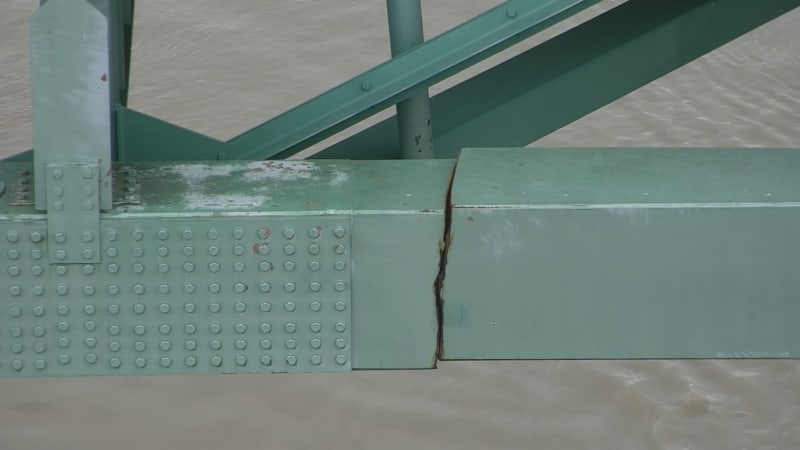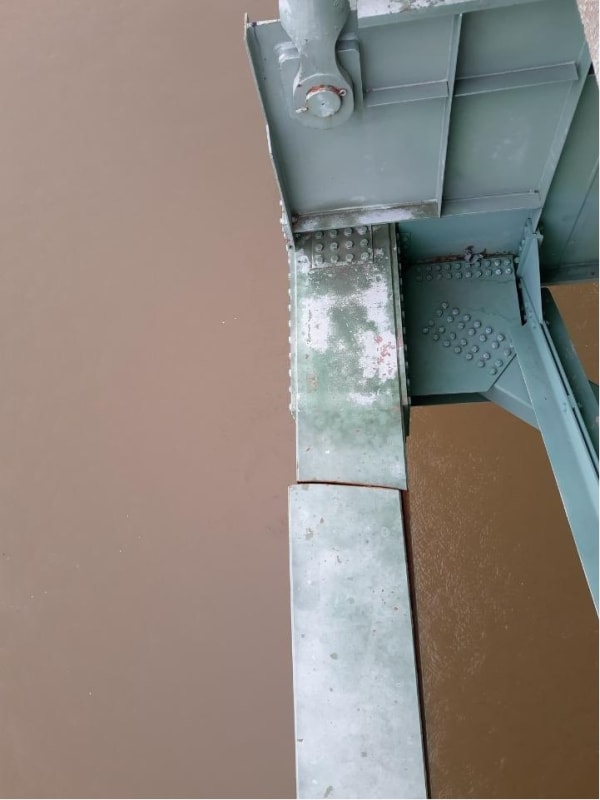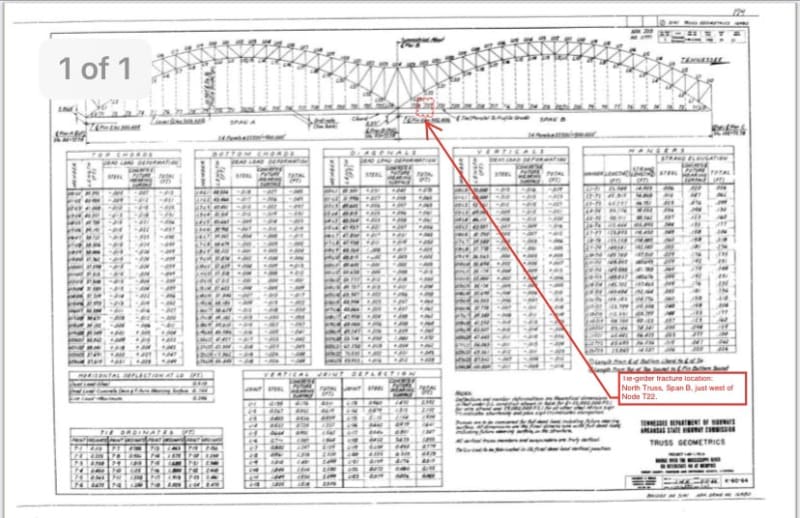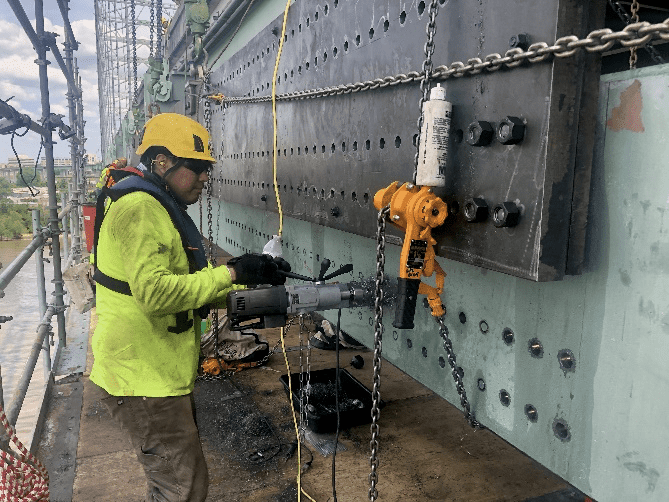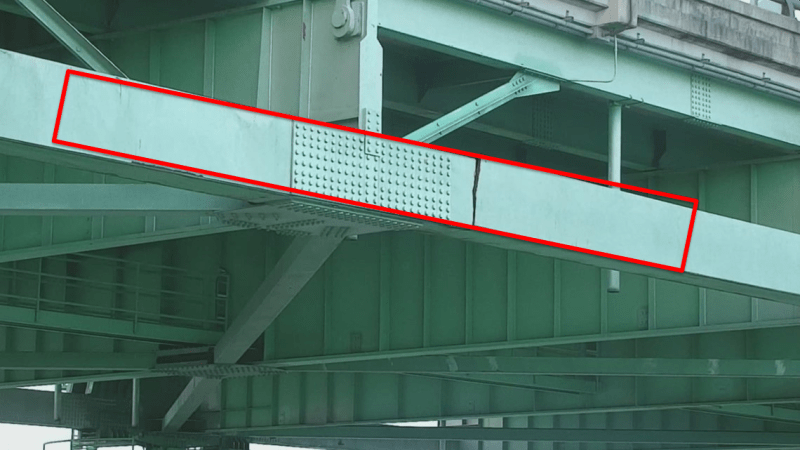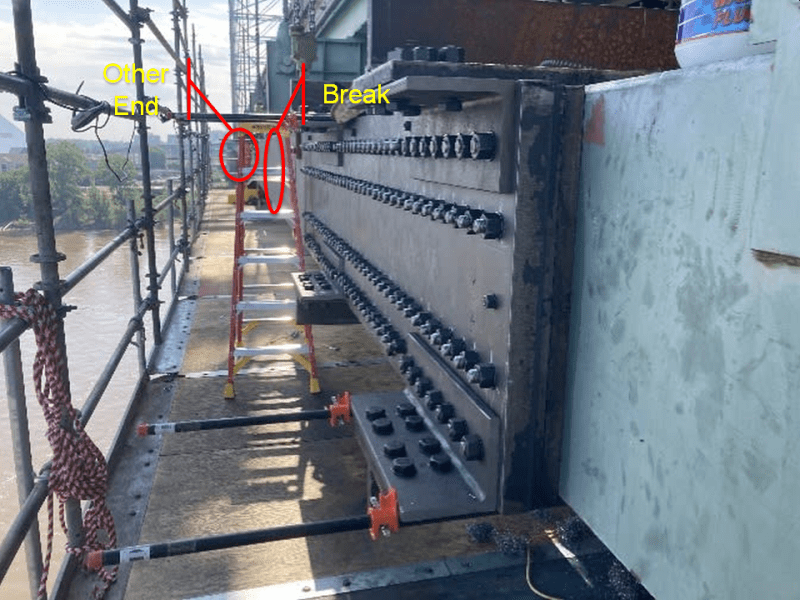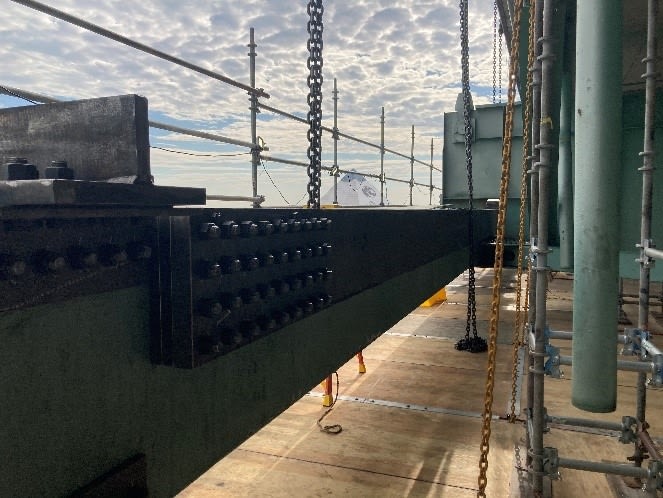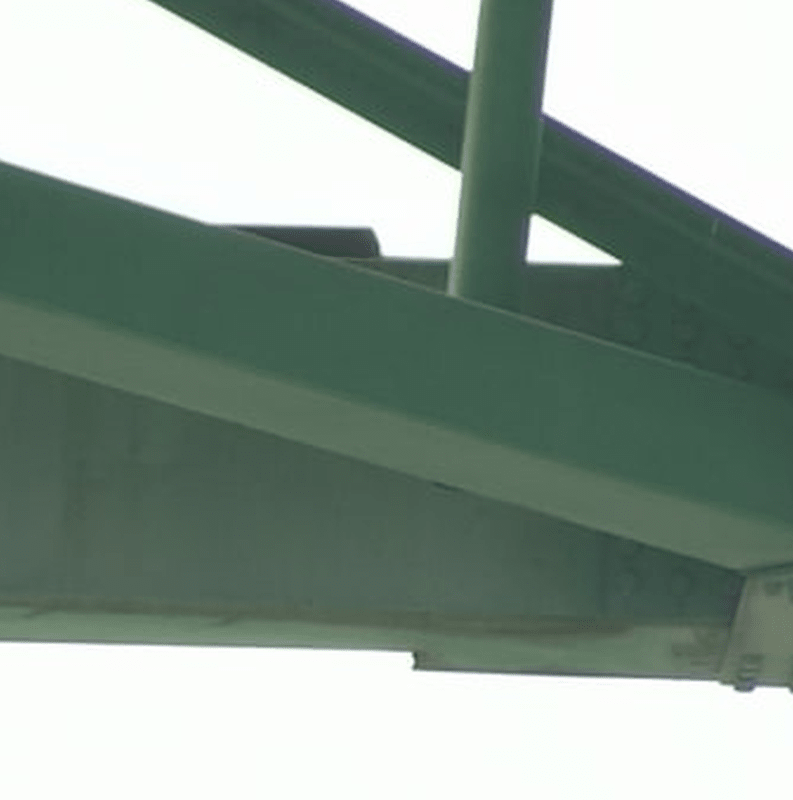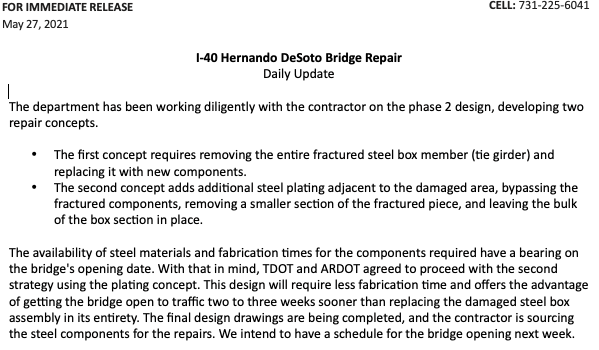Wouldn't it have been easier, quicker, and just as effective to remove the bolts from one end of the plates joining the two tie beams, and install the repair plates from that point out past the crack? Those bolts aren't holding much now. Doing it that way would avoid compromising the strength of the good tie beam with all the new holes.
Extending the repair plates to the good tie beam didn't add anything. If the bolted joint at the end of the failed beam was good enough for the original build, it should be good enough for the repair. The spacer plates could have been much thinner since the nuts and bolts don't have to be cleared. It probably would have cut the added dead weight by more than half.
